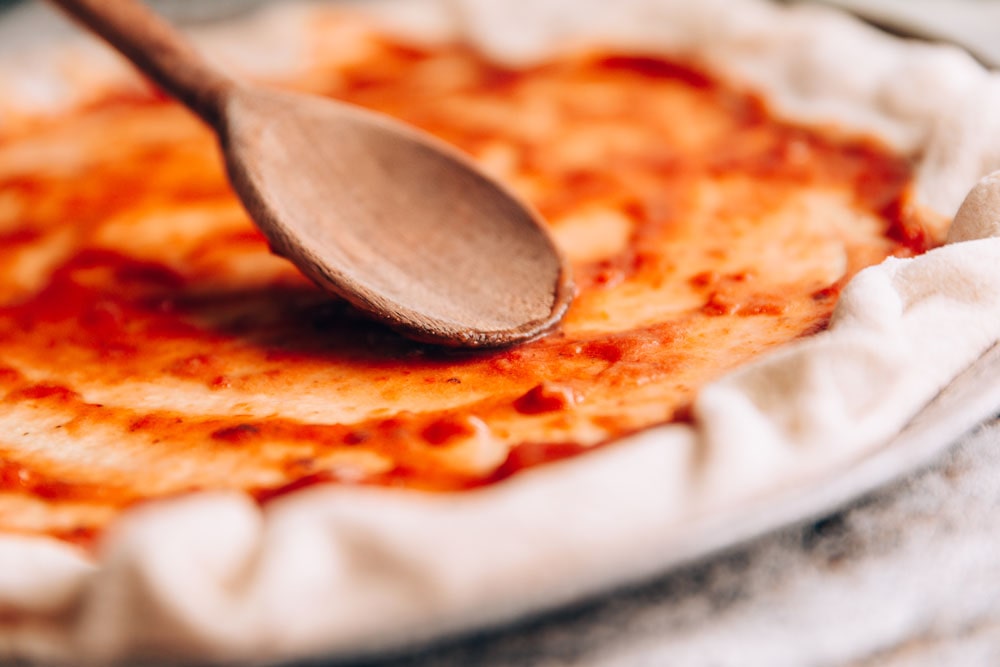Q: How do I deal with seasonal dough problems?
A: Most seasonal dough issues can be traced back to lack of temperature control or, more precisely, a failure to monitor temperature when making the dough. I’ve said it before, and I’ll say it again: You cannot have effective dough management without temperature control.
Temperature is the No. 1 driver of fermentation. Higher temperatures speed up the rate of fermentation, and lower temperatures slow it down. Too many operators do not monitor the dough temperature during the dough management procedure, which leaves them vulnerable to changes in the dough that can create handling problems and, in a worst-case scenario, dough failure.
Related: The Dough Doctor offers 5 tips for a better delivery/carryout pizza
The easiest way to reduce or eliminate seasonal changes in the dough—or whenever the dough seems to have a mind of its own—is to establish a desired mixed-dough temperature (or targeted finished-dough temperature). You will use this temperature year-round to set the stage for dough fermentation. You will also need to measure the temperature of each dough after mixing to confirm that it’s within your target temperature range.
For most pizzerias, the targeted temperature range will be 75°F to 80°F if you have a walk-in cooler or 70°F to 75°F if you have a reach-in cooler. But the targeted temperature can vary depending on your specific shop conditions, the type of pizzas being made and your dough management procedures. The idea is to be consistent.
To adjust the actual temperature of the dough, the dough water temperature should be adjusted up or down. If your tap water isn’t cold enough to provide the desired finished dough temperature, you may need to add some ice to the water or keep water stored in the cooler. In severe conditions, ice may need to be added to the dough. Be sure to use only crushed ice or flake ice; ice cubes and tube ice will likely end up in your finished dough, creating localized wet spots as the ice melts and large bubbles in the crust during the baking process.
There are two methods for determining the right water temperature. One method calls for subtracting the flour temperature from 145; the number you get is the water temperature needed for a finished dough temperature in the 80°F to 85°F range. This can easily be manipulated to provide the water temperature needed for other finished dough temperature ranges. For example, if you subtract the flour temperature from 135, it will provide the water temperature needed for a finished dough temperature in the 75°F to 80°F range. Just remember that the numbers arrived at by this method will only be approximate and may require further adjustment, but they’ll get you reasonably close.
Related: Tom Lehmann explains the various dough-forming methods
With the second method for finding the desired water temperature, multiply the desired finished dough temperature by three, then subtract the sum of the flour temperature, the room temperature and the friction factor. The friction factor is a number used to correct for the temperature gain resulting from friction between the dough and the bowl during the mixing process. For most pizza doughs, you can use a value of 20 for the friction factor if you’re using a planetary or spiral type of mixer. For a different type of mixer, here is how to determine the friction factor: Multiply the actual dough temperature by three and subtract the sum of the flour temperature, room temperature and water temperature. This will give you the friction factor for any type of mixer. But if you change the dough absorption, mixing time or dough size, the friction factor will also change, so it will need to be recalculated if you want to be exact.
The late Tom Lehmann was a frequent contributor to PMQ and served as the longtime director of bakery assistance for the American Institute of Baking (AIB) and as a pizza industry consultant.













